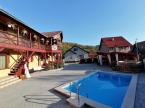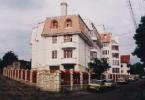Information
Marghita (Hungarian: Margitta) is a city in Bihor County, Romania.
History
The name appears to be derived from the name "Margit" (Margaret), Saint Margaret the patron of a local church. The first time it was used in a document was in 1216. In the 14th century, it became a feudal holding of the Hungarian landlord.In 1376 king Ludovic of Hungary gave to Marghita the right of organizing a fair and it developed in the next centuries as a market town. There were several peasant revolts against the feudal system affecting Marghita in 1467 and 1514. At the beginning of the 14th century, it became, together with the whole of Bihor county and Hungary, an Ottoman province.
In 1823, a great fire destroyed half of the buildings of Marghita. After the 1848 revolution, the local peasants were no longer serfs and manufacturing and industry began to develop.
After one millenia of beeing part of Hungary, Marghita and Transylvania was given to Romania in 1920. Between 1940 and 1944, it was returned to Hungary, when about 1,700 Jews of Marghita were sent to concentration camps. On 20 October 1944, the Romanian Army occupied again Marghita. After 1947 with the Soviets imposing a Communist government in Romania, factories and land were nationalized. Over the course of the next few years, Marghita took part in the Romanian industrialization process.
Politics
The Marghita Municipal Council, elected in the 2004 local government elections, is made up of 17 councillors, with the following party composition:
Population
Currently, Marghita has about 19,000 people, 17.000 of whom live in Marghita city, 1,200 in the village of Cheţ and 800 in the village of Ghenetea.Ethnically, it is comprised of:
- Romanians - 50 %
- Hungarians - 46 %
- Others (Slovaks and Rroma) - 4%

 English
English










